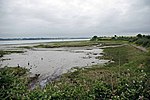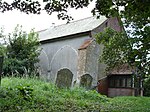Priory Halt railway station
1920 establishments in England1965 disestablishments in EnglandDisused railway stations in EssexEast of England railway station stubsFormer Great Eastern Railway stations ... and 5 more
Pages with no open date in Infobox stationRailway stations in Great Britain closed in 1965Railway stations in Great Britain opened in 1920TendringUse British English from December 2020
Priory Halt railway station served the district of Tendring, Essex, England, from 1920 to 1965 on the Mayflower Line.
Excerpt from the Wikipedia article Priory Halt railway station (License: CC BY-SA 3.0, Authors).Priory Halt railway station
Wheatsheaf Close, Essex
Geographical coordinates (GPS) Address Nearby Places Show on map
Geographical coordinates (GPS)
| Latitude | Longitude |
|---|---|
| N 51.938 ° | E 1.1511 ° |
Address
Wheatsheaf Close
Wheatsheaf Close
CO11 2TD Essex
England, United Kingdom
Open on Google Maps








